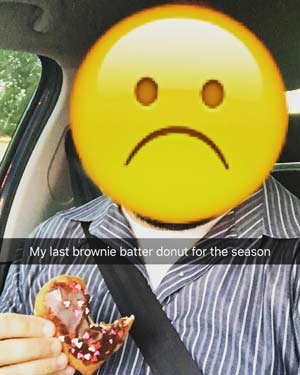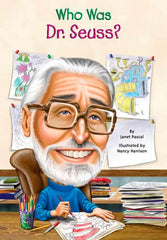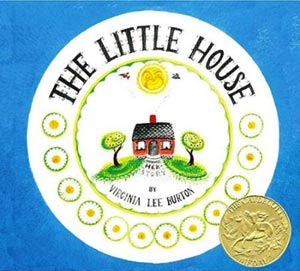Secure Checkout. FREE SHIPPING for Continental U.S. Orders over $60.
Menu
-
- Home
-
About Us
-
The Approach
-
Linking Language & Literacy
-
MindWing Learning
-
Learning Resources
-
SHOP
-
Blog
-
- About MindWing
- Our People
- Contact Us
- Your Account
- Login
-
United States (USD $)

Secure Checkout. FREE SHIPPING for Continental U.S. Orders over $60.

Another Classic: Dr. Seuss’ The Sneetches
March 21, 2016
 A previous blog (“Read Across America Day and Dr. Seuss Lesson,” 2/29/16) focused on the biography about Dr. Seuss. One of his selections mentioned was The Sneetches, published in 1961. Written during the 1960s during the civil rights struggle, this book demonstrates conflict between star-bellied Sneetches and those Sneetches who did not have stars. In a biography, it was stated that Ted Geisel showed through this story how he thought it was silly for people “to hate one another because they looked different” (p. 81, Who Was Dr. Seuss? by Janet Pascal). Below find The Sneetches outlined using five of the seven SGM Developmental Stages...
A previous blog (“Read Across America Day and Dr. Seuss Lesson,” 2/29/16) focused on the biography about Dr. Seuss. One of his selections mentioned was The Sneetches, published in 1961. Written during the 1960s during the civil rights struggle, this book demonstrates conflict between star-bellied Sneetches and those Sneetches who did not have stars. In a biography, it was stated that Ted Geisel showed through this story how he thought it was silly for people “to hate one another because they looked different” (p. 81, Who Was Dr. Seuss? by Janet Pascal). Below find The Sneetches outlined using five of the seven SGM Developmental Stages...

Spring Stories — The Legend of The Indian Paintbrush
March 18, 2016
 The Legend of The Indian Paintbrush (Legends Series) by Tomie dePaola
The Legend of The Indian Paintbrush (Legends Series) by Tomie dePaola
The following synopsis is taken from Goodreads
In spring, the hills and meadows of Texas and Wyoming are ablaze with the reds, oranges, and yellows of the Indian Paintbrush. How this striking plant received its name is told in an old Indian legend. Many years ago, when the People traveled the Plains, a young Indian boy had a Dream-Vision in which it was revealed that one day he would create a painting that was as pure as the colors of the evening sky at sunset. The boy grew up to become the painter of the tribe, but although he found a pure white buckskin for a canvas and made paints from the brightest flowers and the reddest berries, he could not capture the sunset...

A Leprechaun Lesson for St. Patrick’s Day with Story Grammar Marker®
March 14, 2016

Cead Mile Failte (A Hundred Thousand Welcomes)!
I always enjoy trickster tales and have been amazed at the discussion and enthusiasm that these tales elicit from children. The tales from this folktale genre exists worldwide. So, with this in mind and St. Patrick’s Day on the horizon, I thought it would be fun to look at books involving leprechauns, those mischievous fairies from Irish folklore. A brief trip to my local library in Springfield, Massachusetts, netted many books sure to put a smile on your student’s face! One such tale is Clever Tom and the Leprechaun. Here is a link to a YouTube video of a reading of the book. I would begin by reviewing two words in the title: clever and leprechaun...

Tech Tuesday: Using Emoji in Narrative Analysis
March 08, 2016

A friend’s Emoji creation in the SnapChat app.
In selecting topics for Technology Tuesday, I find it helpful to “piggy back” on my own clinical work, of course, but also on topics that have recently appeared on this blog. Recently, Sheila Moreau wrote in a MindWing blog about the power of emoji for understanding narrative events, identifying emotions, and expressing empathy, particularly in relation to Facebook’s recent incorporation of a range of reactions available to use in response to others’ posts. While emoji are a narrative phenomenon changing our (and teens’) reaction to social media (note that they have always been present in the “much-cooler” Snapchat), there are also ways to use them as visual tools out of the context of social media, a place where clinicians may not “want to go” with students...

Read Across America Day & Dr. Seuss Lesson!
February 29, 2016
 As always, I began writing my lesson by gathering my focus book and Story Grammar Marker® Mini-Posters. Since the children enjoyed our recent Rosa Parks read aloud Who was Rosa Parks? written by Yona Zeldis McDonough, this week I chose Who Was Dr. Seuss? written by Janet B. Pascal from the same series. I planned the lesson to coincide with Read Across America Day on March 2, which is Dr. Seuss’ birthday. The lexile measure of this book is 820L. The following lesson suggestions were designed for grades 3 and 4. Lessons may be modified to meet your student’s needs. Many people ask how I go about creating lessons to use the SGM®. Really, it is the opposite thinking, as I always have asked myself: How can the SGM® be used to enhance the lessons I already do and target skills that I am trying to teach?...
As always, I began writing my lesson by gathering my focus book and Story Grammar Marker® Mini-Posters. Since the children enjoyed our recent Rosa Parks read aloud Who was Rosa Parks? written by Yona Zeldis McDonough, this week I chose Who Was Dr. Seuss? written by Janet B. Pascal from the same series. I planned the lesson to coincide with Read Across America Day on March 2, which is Dr. Seuss’ birthday. The lexile measure of this book is 820L. The following lesson suggestions were designed for grades 3 and 4. Lessons may be modified to meet your student’s needs. Many people ask how I go about creating lessons to use the SGM®. Really, it is the opposite thinking, as I always have asked myself: How can the SGM® be used to enhance the lessons I already do and target skills that I am trying to teach?...

Setting Activity—The Little House
January 12, 2016
 The Little House by Virginia Lee Burton was first published in 1942 but remains a favorite of many. It tells the story of a Little House — from the house’s perspective — that is located in the country, is lived in, and surrounded by beauty.
The Little House by Virginia Lee Burton was first published in 1942 but remains a favorite of many. It tells the story of a Little House — from the house’s perspective — that is located in the country, is lived in, and surrounded by beauty.
As the Little House sees the distant lights of the city, she wonders what it would be like to live in the city, and as time goes on, she finds the city growing until she is surrounded by it and no one lives in her anymore...

 The Legend of The Indian Paintbrush (Legends Series) by Tomie dePaola
The Legend of The Indian Paintbrush (Legends Series) by Tomie dePaola